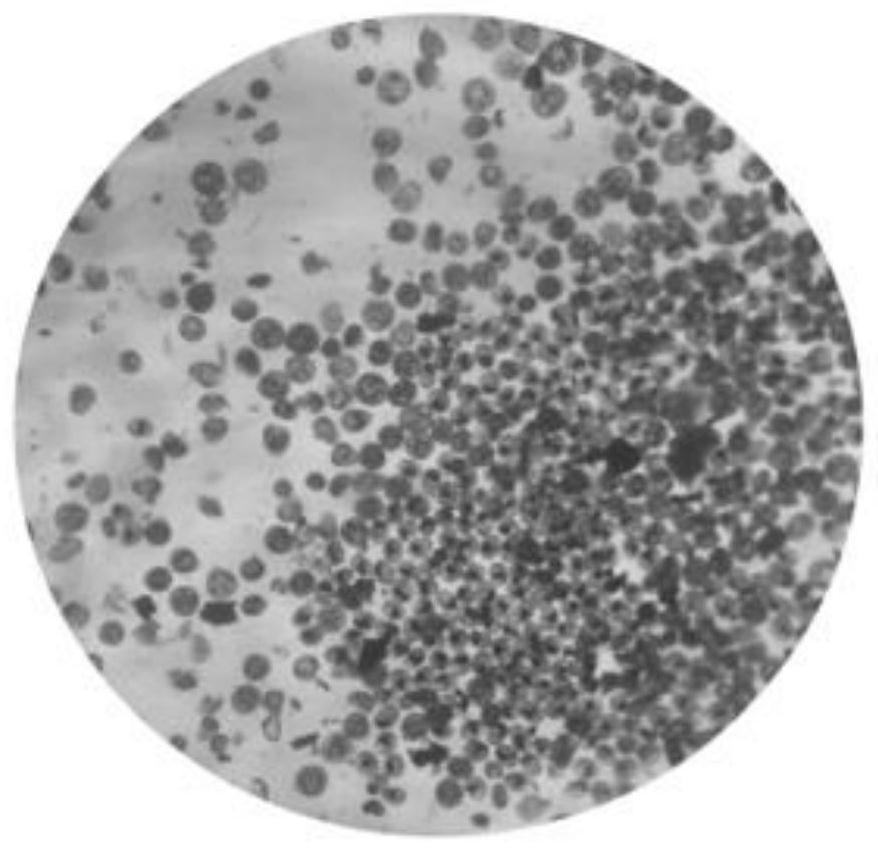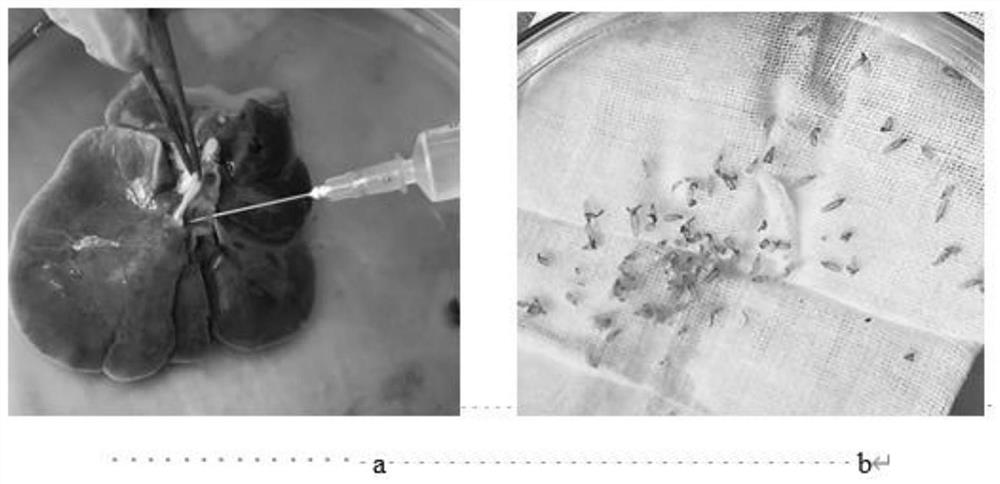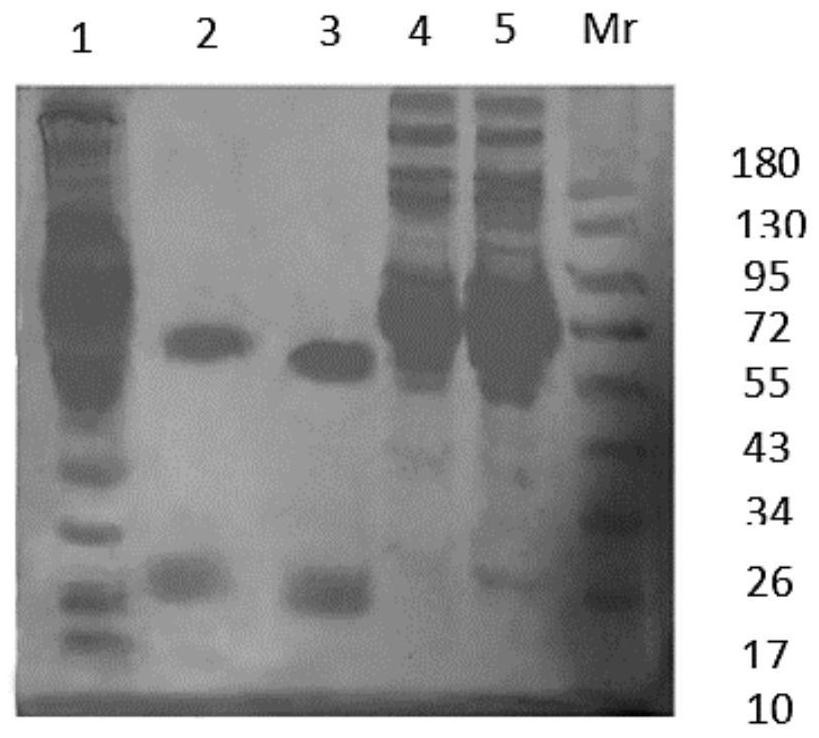Application of nanogold rod in detection of serum circulating antigen through clonorchis sinensis specific antibody
A nano-gold rod, specific technology, applied in nanotechnology, nanotechnology, nanotechnology for materials and surface science, etc., can solve the problems of inaccurate detection of liver fluke content, low sensitivity, and long time in the early stage
- Summary
- Abstract
- Description
- Claims
- Application Information
AI Technical Summary
Problems solved by technology
Method used
Image
Examples
Embodiment 1
[0042] 1. Preparation of liver fluke antiserum and specific IgG antibody
[0043] 1.1 SD rat liver fluke model establishment
[0044] 1.1.1 Collection and isolation of liver fluke metacercariae
[0045] Generally, take 1 to 2 pieces of muscle on the back of the fish (use scissors to pick up the partial fish skin, cut out a piece of soybean-sized fish meat from under the skin, be careful not to have fish skin), put the cut fish meat on the prepared glass On the slice, lightly press the cover glass. For the convenience of observation, make the fish flesh thinner and translucent, and check the metacercariae under the dissecting microscope. Scrape the observed positive fish from the glass slide, and use the prepared digestive juice (digestive juice preparation: absorb 5ml of hydrochloric acid and add it to 1000ml of normal saline, then weigh 7.0g of pepsin at a ratio of 1:3000, and add it to the above mixture , fully mixed, ready to use) It is best to preheat to about 40°C in ad...
Embodiment 2
[0061] 1. Preparation of liver fluke-specific IgG antibody functionalized gold nanorods
[0062] 1.1 Preparation and purification of gold nanorods
[0063] 1.1.1 Preparation of gold crystal seed solution
[0064] Firstly, gold nanoparticle seeds with small particle size are prepared. Mix cetyltrimethylammonium bromide solution (CTAB0.2mmol / L) 1.88mL, chloroauric acid solution (HAuCl 4 2mmol / L) 625μL, pure water 1.37mL and stir well. Take out the sodium borohydride (NaBH 40.01M) currently prepared in the 4°C refrigerator and add 450 μL to the above mixture, accelerate the stirring for several minutes until the color of the solution turns to tea red, continue to shake for 5 minutes, and then incubate in a 28°C incubator 2 hours.
[0065] 1.1.2 Growth solution preparation
[0066] Prepare several 50ml centrifuge tubes according to the needs of the experiment, add 11.875mL of CTAB (0.2M) that has been prepared and completely dissolved in each centrifuge tube, and then absorb ...
Embodiment 3
[0082] 1. Screening and identification of circulating antigen-related components
[0083] 1.1 SDS-PAGE analysis of circulating antigen-related components
[0084] 1.1.1 SDS-PAGE purification of excreted and secreted antigens
[0085] Add 1 / 4 volume of SDS-PAGE protein loading buffer (5×) to serum samples on days 3, 10, 17, and 31, and mix well. The mixture was heated in a boiling water bath for 5 to 10 minutes, and after heating, the mixture was centrifuged briefly and collected at the bottom of the tube. according to( Image 6 and Table 1) The protein concentration measured by the BCA protein quantification kit determines the loading amount and volume of the sample. And after electrophoresis treatment, staining and decolorization are carried out in sequence to obtain clearer protein bands and completely remove the staining background, then take pictures and record.
[0086] Finally, use the PAGE Gel Protein Micro Recovery Kit to elute the proteins in the recovered gel.
...
PUM
 Login to View More
Login to View More Abstract
Description
Claims
Application Information
 Login to View More
Login to View More - R&D
- Intellectual Property
- Life Sciences
- Materials
- Tech Scout
- Unparalleled Data Quality
- Higher Quality Content
- 60% Fewer Hallucinations
Browse by: Latest US Patents, China's latest patents, Technical Efficacy Thesaurus, Application Domain, Technology Topic, Popular Technical Reports.
© 2025 PatSnap. All rights reserved.Legal|Privacy policy|Modern Slavery Act Transparency Statement|Sitemap|About US| Contact US: help@patsnap.com



